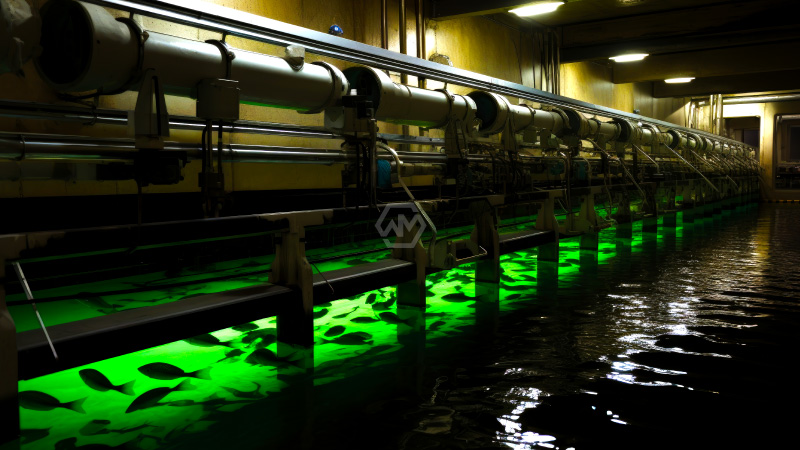- Fish feed is a crucial part of the aquaculture sector because it gives fish nutrients.
- In comparison to other forms of fish nutrition, fish feed is more convenient and manageable.
- To cut expenses and boost the nutritional content of fish feed, major producers are adding alternative protein sources.
Fish feed is a crucial part of the aquaculture sector because it gives fish the nutrients they need to grow and develop. To make premium fish feed, raw materials such as soybeans, corn, fishmeal, vitamins, and minerals are combined, cooked, dried, and pelletized.
Using fish feed in aquaculture has the advantages of giving fish the nutrition they need to grow healthily, boosting survival rates, and lowering the pollution that uneaten feed causes to the environment.
Fish Feed Manufacturing Plant
In comparison to other forms of fish nutrition, fish feed is more convenient and manageable and can be tailored to meet the unique dietary requirements of various fish species.
The growing global population and the growing preference for fish and seafood as a preferred source of protein are expected to drive significant growth in the fish feed market.
The market is expanding as a result of the growing popularity of wholesome diets, environmentally friendly, organic fish feed products free of dangerous chemicals and antibiotics, and rising fish and seafood consumption. To cut expenses and boost the nutritional content of fish feed, major producers are adding alternative protein sources like soybean meal and poultry byproducts.
Several topics are covered in the report on establishing a fish feed manufacturing plant, such as price analysis, the impact of COVID-19, market forecasting, market analysis, and market breakdowns by region and segment.
Along with project specifics, requirements, and associated costs, it also offers insights into the global fish feed industry landscape. The report covers a comprehensive process flow, which includes requirements for land, location and site development, plant layout, machinery, packaging, transportation, utilities, and human resources.
An in-depth study of the project economics for establishing a fish feed manufacturing facility is also provided, covering capital expenditures, operating costs, spending forecasts, income projections, taxation and depreciation, profit forecasts, and financial analysis.
The market trends and analysis, market segmentation, regional market breakdown, pricing trends, competitive and regulatory environments, strategic recommendations, and case studies of profitable endeavors are all included in the report. The report offers post-sale analyst support and can be customized to meet customer needs.



